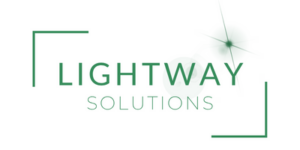Data Fabric: The Future of Data Management for Growing Businesses
Companies of all sizes are grappling with the challenges of managing and leveraging their ever-growing data. This is especially true for small businesses who have the same needs but fewer resources. Traditional data warehouses and data lakes aren’t keeping pace with the demands of modern businesses.
Enter Data Fabric, a revolutionary architectural approach that promises to transform how organizations access, integrate, and utilize their data.
What is Data Fabric?
Data Fabric is a dynamic, integrated architecture that seamlessly connects diverse data sources across an organization. It’s not just about moving data; it’s about creating a unified data experience that:
- Unifies Data Silos: Breaks down barriers between different data sources, such as databases, cloud platforms, and on-premises systems.
- Improves Data Accessibility: Provides secure and controlled access to data from any location, empowering business users to make data-driven decisions faster.
- Enhances Data Quality: Ensures data accuracy, consistency, and reliability through automated data quality checks and governance policies.
- Accelerates Data Insights: Enables faster data analysis and reporting through advanced analytics capabilities and machine learning.
The Intersection of Data Fabric and Enhanced Data Governance
The rise of Data Fabric is inextricably linked to the increasing importance of data governance and privacy. As regulations like GDPR and CCPA continue to evolve, businesses face stricter requirements for data security, privacy, and compliance. Regardless of size, every business has compliance requirements.
Data Fabric architectures can play a crucial role in meeting these challenges by:
- Centralized Data Governance: Implementing and enforcing data governance policies across the entire data landscape.
- Enhanced Data Security: Implementing robust security measures, such as encryption and access controls, to protect sensitive data.
- Improved Data Privacy: Enabling organizations to comply with privacy regulations by providing granular control over data access and usage.
- Data Lineage and Traceability: Tracking the origin and movement of data across the organization, enabling faster and more efficient response to data breaches and compliance audits.
Why a Partner Like Lightway Solutions is Critical
Navigating the complexities of Data Fabric requires specialized expertise. A technology partner like Lightway Solutions can provide invaluable guidance and support to your business with:
- Expert Consulting: Assessing your current data landscape and recommending the optimal Data Fabric architecture for your specific needs.
- Solution Implementation: Designing, building, and deploying a robust and scalable Data Fabric solution.
- Ongoing Support: Providing ongoing maintenance, support, and optimization services to ensure the continued success of your Data Fabric implementation.
- Staying Ahead of the Curve: Keeping you informed about the latest advancements in Data Fabric technology and helping you adapt to evolving industry best practices.
By partnering with Lightway Solutions, you can leverage the power of Data Fabric to:
- Gain a competitive edge: Make faster, more informed business decisions based on accurate and timely data.
- Improve operational efficiency: Streamline data processes and reduce the time and resources required to manage data.
- Enhance customer experiences: Deliver personalized and engaging customer experiences based on a deep understanding of customer behavior.
- Drive innovation: Unlock new opportunities for innovation through advanced data analytics and machine learning.
Data Fabric represents a significant shift in how organizations approach data management. It can be more affordable and give you a significant competitive advantage. Let’s talk about what this might look like for you.
Read more

3 Hybrid Cloud Architecture Considerations for Small Businesses
Hybrid cloud architecture combines the flexibility of public cloud services with the control and security of on-premises infrastructure.

5 Times “Analog” Solutions Reign Supreme for Businesses
Not every problem requires a high-tech solution. In fact, some “analog” approaches can be more effective, efficient, and more reliable.

Distributed Computing: A Double-Edged Sword for Businesses
The rise of AI-powered PCs is ushering in a new era of distributed computing. This offers exciting possibilities and significant challenges.
